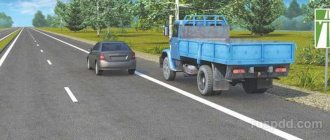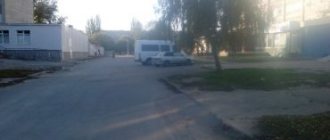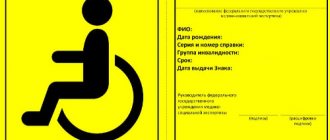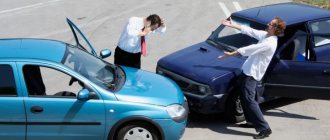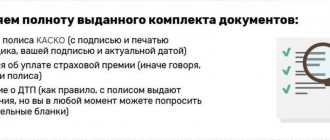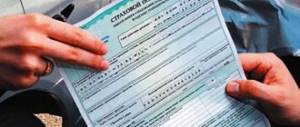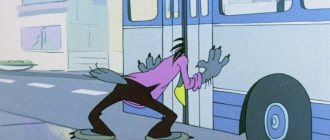Analysis of accident statistics
The traffic police records all cases of death and injury as a result of road accidents. Over the past year, the number of accidents in which there were victims reached 126,000. Number of deaths: 16.6 thousand adults, 582 children. A total of 168,146 citizens were injured, of which 15,860 were children.
To reduce the number of victims, the Ministry of Internal Affairs, public associations, cultural and educational organizations are making joint efforts to improve this situation. The population is told in accessible ways how to avoid accidents and taught the rules of behavior on highways and city streets.
Most often, collisions with people, obstacles and cars are caused by drunk drivers. Car accidents also occur due to bad roads, inattention of pedestrians, and non-compliance with traffic rules by road users.
Forms and methods of accident prevention
Strict adherence to traffic rules plays a significant role in preventing accidents.
However, this is not enough to fully prevent accidents. Therefore, an integrated approach is used, which allows different sectors of society to be involved in the process. Because activities can and should differ depending on who they are aimed at. Basic training on how to avoid accidents is provided for both children and adults. And each case has its own specifics. The approach varies depending on your professional background. A striking example: when a person gets behind the wheel, using vehicles only for himself or his family, accordingly, he drives a car from time to time. And it’s a completely different matter when the profession involves constant travel, perhaps responsibility for the lives of other people or for cargo in the event of an accident.
For civil servants and police officers
Most of all, ordinary motorists fear a collision while driving with a policeman or official, especially a high-ranking one. Because we are sure that such a violator will go unpunished after an accident. There is some justice in such fears, but there is no need to exaggerate. After all, accident prevention among police officers, as well as among civil servants, is quite actively carried out.
Such persons not only must thoroughly know the traffic rules. They are given training so that they can understand when and in what situations the likelihood of an accident is highest. For the purpose of prevention, police officers who work directly on vehicles carry out a practical examination of the area. It is mandatory that police officers regularly confirm their knowledge of traffic rules. Prevention of accidents can be considered their certification for mastering the rules and changes in them.
For drivers with personal cars
Literally from the moment the vehicle is registered, the owner already has in his hands a reminder that is given to him for the purpose of preventing accidents. This is general information about how to behave while driving. However, it is updated regularly, so it should not be considered outdated or irrelevant.
Prevention of accidents in personal transport also includes a road monitoring system. Authorities are checking whether there are dangerous areas. If any are detected, measures are taken to reduce the likelihood of accidents. It is mandatory for the police to hang banners and posters with useful and practical information to prevent road accidents.
If a policeman stops a driver for a minor violation, he must explain to him why the car owner is wrong and what the consequences of such behavior on the road are. And this can also be considered accident prevention.
Motorcyclists
Separate prevention programs are being developed for drivers who operate motorcycles. Since this category is considered the most vulnerable: along with pedestrians and cyclists, such people suffer greatly in road accidents. But, unlike the above-mentioned road users, motorcyclists also pose a great threat to others, since they drive a vehicle capable of moving at high speed.
Most often, accident prevention measures are aimed at reminding motorcycle owners that their safety is in their own hands. After all, they often ignore basic requirements: for example, wearing a helmet. And also, without fail, the prevention of accidents among motorcyclists includes explanatory work with this category of drivers.
For drivers of public and freight transport
If a person wants to work on public or freight transport, then accident prevention in this case involves, first of all, checking his professionalism. It is carried out even when applying for a job. In the future, for the purpose of prevention, checks are carried out from time to time to determine the level of skills and knowledge. And the management of the vehicle fleet where the driver works can be involved in preventing accidents. Such specialists are subject to increased demands, because they are responsible for the lives of other people or for material values.
Just like preventing accidents on company vehicles, working with truck drivers has its own specifics. They must understand which roads they can drive on and which they cannot. Separate training is provided for those drivers who transport dangerous goods. In large cities, in order to prevent accidents involving trucks, which potentially pose a great threat to other road users, separate roads are allocated for such vehicles - bypass roads.
For enterprise employees
At some factories and large warehouse areas, motor vehicles operate. And in this case, it is important to develop a set of measures aimed at preventing accidents at the enterprise. The driver must become familiar with the road in order to understand where and what areas may be potentially dangerous. Before leaving, the vehicle is checked in order to prevent accidents due to breakdown or malfunction. Chauffeurs are interviewed and trained so that they understand the extent of their responsibility. After all, the quality and safety of their work affects the operation of the enterprise as a whole, and accidents reduce productivity.
Prevention measures
Preventive measures included in the educational process of schoolchildren and children from 4 to 7 years old are carried out by all interested organizations. Parents and road users should also participate in the training.
Drivers, pedestrians, passengers of public and private transport are required to know and comply with the Rules of Conduct on the Roads. Every adult, if necessary, should be able to take action, stop children and take them away from a dangerous place in order to prevent an accident. .
Basic forms of preventive measures
Road accident prevention refers to work aimed at promoting traffic rules among the population. Traffic police officers, school teachers and kindergarten teachers tell you what needs to be done to prevent the possibility of an accident. Prevention methods:
- Explanation by traffic police inspectors of the rules of behavior on the roads among different categories of the population.
- Dissemination of information through billboards, television, magazines, newspapers, the Internet, posters. Visual propaganda located along the highway encourages motorists to comply with traffic rules.
- Conversations are conducted with each category of citizens that require special attention from the traffic police. Traffic police officers develop lessons that take into account the age category and specific activities of the audience. For adults, classes are conducted in the form of lectures and seminars. In kindergartens and schools, information is presented through educational games. Activities to prevent road accidents can be planned jointly with local youth theaters and palaces of culture.
- Regional conferences where participants share experiences and study statistics, causes and prevention of road accidents.
Several police services are responsible for road safety. They are developing measures to prevent accidents and are working to promote rules of conduct on the highway and city streets.
The route is a delicate matter
The World Report on Road Traffic Injury Prevention notes that personal safety starts with route planning. One of the safe and favorable conditions for the movement of the most vulnerable categories of road users (pedestrians and cyclists) are pedestrian, bicycle or pedestrian paths. For car owners, ideal routes involve highways that are isolated from pedestrians and cyclists and equipped with crash barriers. If you are lucky and don’t rush to work every morning, then your priority is to use the above-mentioned benefits of civilization on the way, but if you are forced to travel long distances with changes in transport or with complex road junctions, then following the recommendations of the same report is the safest give preference to the route on which you will spend the least effort. For example, it is better to take a bus with transfers than to walk several stops to catch a bus that will take you to point “B” without transfers. Following traffic lights, road markings, searching for pedestrian crossings and other actions that require utmost attention on the road will take much more time and effort than leisurely driving on a bus with a clear, proven route.
Related article In facts and figures: about a quarter of all road accidents involve pedestrians
A few years ago, Brazilian experts published research results in the International Journal of Injury Control and Safety. According to them, most pedestrians who were hit by cars did not spend time looking for safe crossings, but simply crossed the road in the wrong place.
This is categorically unacceptable: the unexpected appearance of a pedestrian on the road not only frightens the driver, but also creates the danger of a collision at high speed. Recently, such an incident occurred in Zelenograd. A 42-year-old man, who wanted to catch an approaching bus, did not look for a pedestrian crossing and jumped over the dividing fence. Without calculating his strength, he fell under the wheels of the bus, and the driver, not having time to apply the emergency brake, “dragged” the man several tens of meters. So, once again: in order to protect yourself as much as possible from emergency situations, plan your routes in such a way as to comply with all the rules without spending much effort on it.
How are they carried out?
Police officers provide explanations in an accessible form on how to avoid getting into an accident. Measures aimed at preventing accidents are developed and implemented:
- traffic police;
- Department of the Ministry of Internal Affairs;
- MREO;
- Insurance companies;
- educational institutions.
Each department is interested in reducing the number of road accidents, deaths and injuries.
Among the drivers
Motorists are the main participants in traffic on the roads. According to the Code of Administrative Offenses, they are directly responsible for compliance with traffic rules and control of the situation. Any violations on their part lead to punishment through fines and deprivation of rights. To avoid loss of life, new forms of preventive measures are created every year. The following have a positive impact on drivers of private cars, public and freight transport:
- conversations conducted by MREO employees during vehicle registration;
- memos handed out by police officers when communicating with various groups of the population;
- targeted electronic mailings telling about changes in the Code of Administrative Offenses and Traffic Regulations;
- banners, banners, posters and other types of visual propaganda reminding motorists of the need to follow the rules of conduct on the highway and while driving through populated areas;
- explanations provided by traffic police officers for persons who have committed minor violations;
- flash mobs, rallies with the participation of schoolchildren and parents aimed at improving traffic culture.
With the participation of children
The most important part of the joint work of the police, youth organizations, educational institutions, village and city administrations is the prevention of road accidents involving children.
For each age category, activities are developed that take into account the characteristics of mental perception and the existing basis of knowledge and skills. Children do not remember edifying information presented in the form of a booklet or a boring lecture. Such activities in a child can cause the opposite effect, spurring a desire to do wrong out of a sense of contradiction.
Advice! In order for road accident prevention to encourage young citizens to want to protect themselves, it must be presented in a playful, entertaining form. Ideally, when the children's audience is involved in the action taking place on stage, the audience becomes participants in the performance or concert. Preschoolers are well influenced by cartoons where the main characters invite children to interact and explain the situation that may arise on the road.
Theory must be consolidated in practice. To do this, traffic police officers play out emergency situations. At the end of the activities, the leader of the learning group conducts a test, which makes it clear how effectively the lesson was.
Prevention of traffic accidents
In order to ensure traffic safety on streets and roads, motor transport enterprises must carry out constant work to prevent
and eliminating the causes contributing to
road accidents
.
Necessary:
- carry out educational work among employees of a motor transport enterprise and maintain high labor and transport discipline;
- constantly improve the driving skills of drivers, as well as the knowledge of all employees of a motor transport enterprise in the field of traffic safety;
- study the causes of road accidents and violations of discipline, promptly analyze and discuss each incident in a team;
- ensure good technical condition of vehicles, rational and safe modes of vehicle movement in accordance with their operating conditions.
A motor transport enterprise must carry out work to ensure traffic safety in contact with the State Automobile Inspectorate and with broad public participation.
The direct organizer of such work is the senior traffic safety engineer included in the staff of motor transport enterprises.
The responsibilities of the senior traffic safety engineer include:
- checking the activities of officials of a motor transport enterprise and its production units in terms of preventing road accidents;
- periodic checks of the quality of work of control posts when releasing cars from the garage and returning them to the garage, as well as compliance with the procedure for drivers receiving and handing over cars on the line;
- selective monitoring of the technical condition of vehicles, the quality of their maintenance and repair;
- making proposals to eliminate deficiencies in the arrangement and maintenance of highways along the routes of operation of the vehicles of this enterprise;
- recording and analysis of the causes of road accidents and violations of the “Road Rules” by drivers;
- development of proposals based on analysis and monitoring their implementation after approval by the head of the enterprise;
- travel together with the head of the motor transport company to the scene of a traffic accident to conduct an official investigation and draw up a report;
- organization at a motor transport enterprise of analysis of road accidents and violations of traffic rules committed by drivers;
- participation in the work of commissions created by the police to review materials on violations of rules and instructions in connection with road traffic accidents committed by enterprise drivers;
- participation in the work of the certification commission for assigning qualifications to a driver of the first and second classes;
- periodic testing of the knowledge of drivers and other employees of a motor transport enterprise related to the movement of vehicles, the Rules of the Road, the Rules for the Technical Operation of Rolling Stock of Motor Transport and instructions for the prevention and recording of road accidents;
- organizing the study of the listed documents;
- control of the probationary period of car drivers and the work of driver-mentors;
- systematic monitoring of the work of drivers on the line and the departure of engineering and technical workers to the line in accordance with the schedule approved by the head of the motor transport enterprise;
- development of measures to ensure trouble-free operation of vehicles sent on long business trips;
- generalization and dissemination of the experience of accident-free operation of front-line drivers, the best teams and convoys;
- organizing mass propaganda work on traffic safety: holding lectures, reports, conversations, consultations, information, using visual forms of campaigning, wall printing, radio, loudspeaker and tape recorders, showing special films, etc.;
- equipment and organization of the traffic safety office;
- control of educational work in the production departments of a motor transport enterprise and filling out drivers’ personal cards; providing methodological assistance to the heads of convoys and other departments in conducting classes, conversations and instructing drivers on traffic safety issues;
- preparation of materials for awarding drivers with the badge “For work without accidents” and encouraging drivers who distinguished themselves in preventing road accidents or their serious consequences;
- registration of materials on penalties applied to drivers and other employees who violated traffic safety requirements;
- establishing the necessary contact with local traffic police authorities when developing and implementing organizational, technical and educational measures at the enterprise to ensure traffic safety.
The introduction of senior traffic safety engineers (engineers) into the staff of motor transport enterprises does not mean that the prevention of road accidents can only be ensured by the activities of these employees.
The driver of the car must not only know the “Rules of the Road” well, but also understand their essence. He must ensure that the vehicle is in good condition and not drive onto the line without checking the brakes, steering and lighting systems.
A decisive influence on traffic safety is exerted by the driver’s ability to observe the road situation and perform all actions to drive a car quickly, clearly, but without unnecessary sharpness.
If the driver has the necessary knowledge and skills to drive a car safely, he can work safely even at high speeds, in difficult traffic conditions and in heavy traffic flows.
The driver must remember that he is not alone on the road, so it is necessary to promptly warn other road users about changing the direction of travel, changing lanes and other maneuvers.
Due to the wide variety of conditions and characteristics of road accidents, it is impossible to develop specific recommendations for driver behavior in an emergency.
General principles that can help in an emergency:
- the driver must, despite any danger, not stop driving and take all measures to avoid or alleviate the consequences of a traffic accident;
- always remember that the severity of the consequences will be less, the lower the speed of the vehicle, so strive to reduce the speed as much as possible in the event of an emergency;
- the most severe consequences occur in oncoming collisions of cars, therefore it is necessary, if possible, to avoid a frontal impact and strive to maintain the position of the car on the right side of the road or in its lane;
- In situations of extreme danger, such as the threat of hitting a pedestrian, sounding an audible signal can help.
Injury prevention
Prevention of death and injury begins with the personal culture of road users, the use of technical means designed to ensure the safety of the driver, passengers, and pedestrians. To reduce the number of injured and killed during car accidents, the following are used:
- Child car seats. Parents must provide care and protection for the child.
- Reflective materials. At dusk and at night, it is unacceptable to walk along the road or cross the highway in dark clothes. The driver will not be able to see the person in time and avoid a collision with him.
- Training centers. Today, courses and groups of young police assistants are being created everywhere, where children are taught how to avoid problems while driving along the city streets.
- Internet games that allow a child to study signs and understand the specifics of traffic on the roads.
The largest number of cases resulting in severe injuries and death occur due to:
- recklessness at a red traffic light;
- driving a car at high speed through a populated area, during icy conditions, or on a poorly paved highway;
- driving a car after drinking alcohol;
- motorist communication by phone;
- malfunction of the brake system, airbags.
Advice! To reduce the risk of injury, passengers should remain calm and not distract the driver from driving. Pedestrians are required to cross the road only in designated places.
Planned training for military personnel
Military personnel also often get behind the wheel, unfortunately causing accidents. But they are entrusted with special equipment, which requires both experience and special attention for safe operation. Therefore, for this category of people, in order to prevent accidents, numerous events are carried out, teaching how to avoid accidents on the highway and in the city.
The military is required to be highly conscientious. Because they must monitor not only themselves, but also other road users, preventing accidents. In the event of a risk of an emergency, military personnel have the right to react when traffic violations are detected. Namely: to give instructions to civilians to avoid accidents. Therefore, trainings and classes are regularly organized for them to study the amendments made to the rules and legislation. Next, they conduct an exam to check whether the information has been well learned.
Recommendations for training traffic rules
Studying the rules of behavior on the roads should begin at the age of 4. A small child easily perceives information in pictures that depict signs and the colors of traffic lights. Kids enjoy playing with cars on special rugs where intersections and city streets are drawn. Schoolchildren are informed about the statistics of accidents involving children, and the causes of accidents are explained.
Car owners themselves should strive to study up-to-date information about changes to the Code of Administrative Offenses. Ignorance of the laws is not a basis for avoiding punishment.
Why do children get into accidents?
Let's consider the reasons, which are based on physiological and psychological principles, so:
- Children, due to their age, quickly memorize traffic rules and just as quickly forget.
- Adults often set a bad example for children.
- Boys are more active than girls; their activity prevails over caution. For this reason, when they play too hard, they often become involved in road accidents.
- Children's vision is designed in such a way that, looking ahead at the car, they do not notice the traffic nearby.
- A child needs more time to assess a situation than an adult.
- Due to his small stature, it can be difficult for a driver to notice him on the road. Due to the short steps, the child remains in the high-danger zone longer. And the center of gravity is located higher, for this reason it is difficult for a baby to stop while running, but it is easy to lose balance or fall.
- He does not hear the adult’s information immediately, so he is delayed in reacting to signals.
- The brain is designed in such a way that it is difficult for a child to focus on one object, so he directs his gaze towards more interesting things.
- Uneven treatment of different vehicles. He is afraid of large cars, but underestimates cars and motorcycles.
Dear parents, children do not yet understand the danger of a vehicle, because they are still unfamiliar with such concepts as pain and death. Toys are much more important to them in life, therefore, if you notice a ball on the roadway from afar, slow down in advance, or better yet, to a complete stop.
What should children be taught?
To prevent them from getting into an accident, it is necessary to teach traffic rules from early childhood. It is also useful for adults to know that pedestrian negligence is a common cause of road accidents. A fatal accident occurs in the following cases:
- Crossing the road in unequipped places.
- Driving on the roadway, not the sidewalk.
- At a prohibitory traffic light.
- Crossing the roadway with headphones.
- Incorrect bypass of public transport, etc.
Using your personal example, you need to show your child how to cross the road when going to the garden or from the store to home. Every day, not when he had an accident. Your discipline, diligence and patience should become a beacon for him.

